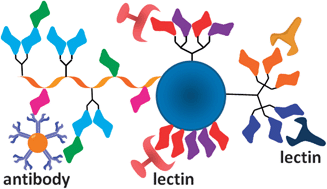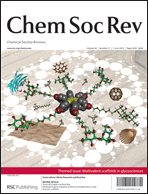Despite efficiently imitating functional ligand presentations in terms of valency and density, most of the reported multivalent carbohydrate prototypes barely reflect the inherent heterogeneity of biological systems, therefore underestimating the potential contribution of synergistic or antagonistic effects to molecular recognition events. To address this question, the design of novel molecular and supramolecular entities displaying different saccharide motifs in a controlled manner is of critical importance. In this review we highlight the current efforts made to synthesize heteromultivalent glycosystems on different platforms (peptides, dendrimers, polymers, oligonucleotides, calixarenes, cyclodextrins, microarrays, vesicles) and to evaluate the influence of heterogeneity in carbohydrate–protein (lectin, antibody) recognition phenomena. Although the number of publications on this topic is limited as compared to the huge volume of reports on homomultivalent sugar displays, the current body of results has already unravelled the existence of new binding mechanisms that operate in heterogeneous environments whose exact biological significance remains to be unveiled.

You have access to this article
 Please wait while we load your content...
Something went wrong. Try again?
Please wait while we load your content...
Something went wrong. Try again?


 Please wait while we load your content...
Please wait while we load your content...